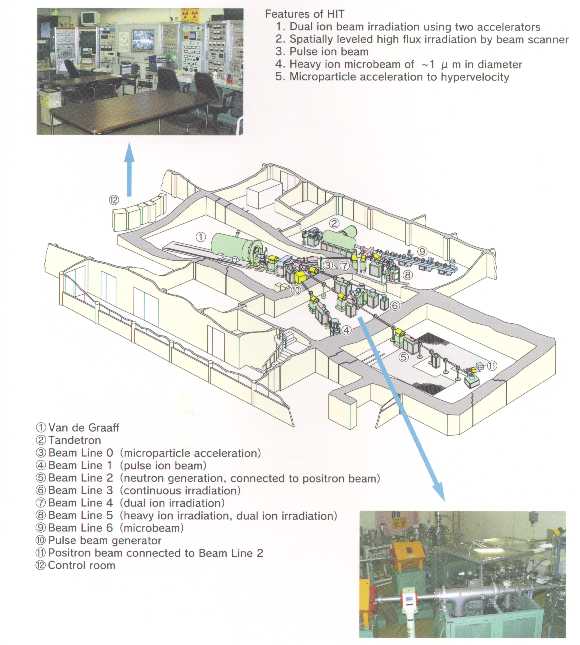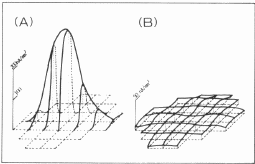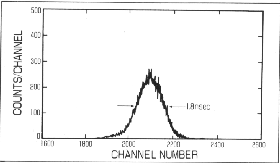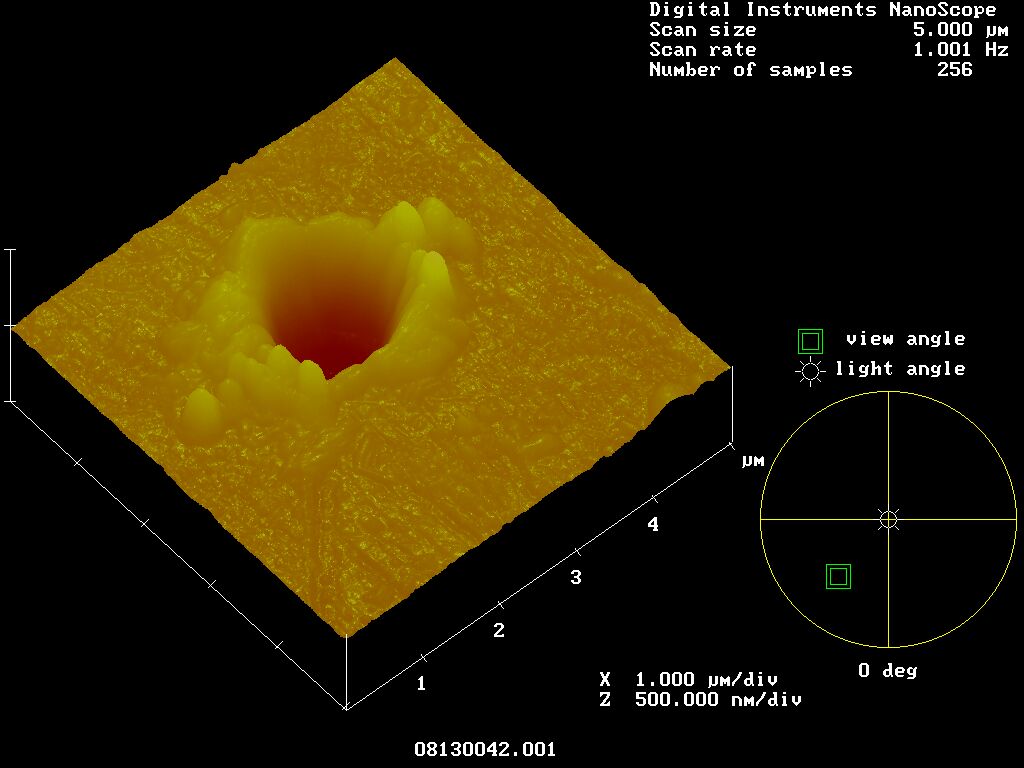High Fluence Irradiation Facility (HIT)
HIT (short for the High Fluence Irradiation Facility,
the University of Tokyo) of the Research Center for Nuclear Science
and Technology is also located in the Tokai campus, and has been working
for cooperative research in the university since the beginning of the 1985
fiscal year. There are two kinds of accelerators. One is 3.75 MV single-ended
Van de Graaff accelerator installed with RF or PIG ion source and having
four beam lines (BL1 - BL4), and the other is 1 MV tandem type accelerator
(Tandetron) with Cs sputter ion source and one beam line (BL5).

High fluence Irradiation Facility "HIT"
- (1) Main characteristics of this facility
- Two different ions, light ions (H+ or He+)
from Van de Graaff and
heavy ions from Tandetron, can be irradiated
simultaneously at the merging
point of the BL4 and BL5 beam lines (dual-beam
irradiation).
- Ion beams can be swept to irradiate uniformly
over a large area
of samples with large currents. The beam sweeping
is possible at the BL3, BL4 and BL5 beam
lines.
- Pulsed ion beam irradiation is possible
at the BL1 beam line. The pulse width is
~ 1 nano second and the repetition
rate of pulses can be varied between 1~ 500
kHz.
- Monochromatic neutron beams can be produced
by nuclear reactions,
such as p-Li and d-d reactions, at the BL2
beam line guided to a neutron
beam hall.
- Heavy ion microbeam analysis system provides
microbeam with as small as 1 micron
in diameter. It also enables us to do single
ion hit experiment.
- Microparticles (typically 1 micron in diameter)
can be accelerated by Van de Graaff. It is
the highest accelerating voltage for microparticle
acceleration in the world. This is mainly
used for simulation of cosmic dust.
- (2) Main research subjects
- Studies on ion beam simulation of neutron
irradiation effects of
fusion materials, such as modified stainless
steels, new metallic materials,
metal matrix composites, tritium breeding
materials and so on, are made
to understand microstructural evolution induced
by displacement damage and
transmutant gases using the dual-beam irradiation
station.
- Studies of ion beam irradiation effects on
polymers, organic liquids, high-temperature
superconductors and ceramics are made using
both DC irradiation, pulsed ion beam and
microbeam to understand the mechanisms of
physical and chemical reactions in the bulk
or at the surface of irradiated materials.
- The advanced technique for trace element
analysis is being developed.
Nuclear reactions by light ions are applied
to determine trace element profiles
in a target material through the precise
measurement of reaction products,
such as particle induced charged particle,
gamma-ray and neutron emission
(PICE, PIGE and PINE).
- Studies using energetic microparticles such
as development of cosmic dust detector installed
in exploring satellites.

Beam lines for dual ion irradiation

Spacial distribution of sweeped nickel ion beam

Typical beam pulse of 1MeV proton

Crater produced by an accelerated Ag particle
on the surface of gold.
Staffs
Hiromi SHIBATA (Associate Professor) shibata@tokai.t.u-tokyo.ac.jp
Takeo IWAI (Research Associate) iwai@tokai.t.u-tokyo.ac.jp
Kenji TAGUCHI (Technician)
Takao OMATA (Technician from ATOX co.) omata@tokai.t.u-tokyo.ac.jp
Masami OSONO (Secretary) masami@tokai.t.u-tokyo.ac.jp
Address
2-22 Shirakata-Shirane, Tokai-mura, Naka-gun,
Ibaraki 319-1188, JAPAN
TEL: +81-287-8475 FAX: +81-29-287-8490 EMAIL:
hit@tokai.t.u-tokyo.ac.jp
Research Center
for Nuclear Science and Technology, The University of Tokyo
Nuclear Engineering Research
laboratory, Faculty of Engineering, The University of Tokyo





